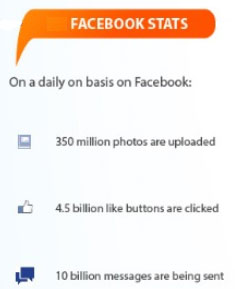Quite the election cycle, wasn’t it? We saw the importance of getting out the vote—of getting potential voters to not only intend to cast their ballots a certain way but also to follow through with their behavior. We also saw how unpredictable it can be to forecast the results, even for experts.
There is a similar dynamic when the campaign is not about an election but rather about change in an organization and its business messaging. When big change is afoot, leaders need to craft an engaging message, generate internal excitement and momentum, and ultimately persuade enough people to adopt some new beliefs and behavior.
Too often, however, the results are disappointing. Despite the time and money spent on business messaging development, collateral, training, events, and perhaps a motivational kick-off, after a few months the campaign never makes it past primary season. How can you beat the odds and generate majority support among employees and other stakeholders?
1. People Will Share Business Messaging if They Believe It
Whose message is it? In many cases the business messaging came top-down from corporate. In others it was developed by the advertising or marketing agency. Those messages tend to be discounted by the people who are expected to share them. A better idea is to include knowledge, credible front-line employees in the message development process; your potential messengers will be more likely to internalize the story when they see their fingerprints (or those of peers) on it.
2. People Will Share the Business Message if It Is Not Personally Risky
In business messaging change initiatives, stakeholders are typically asked to talk about the business (and themselves) in a new way. This can feel clumsy and risky. You might hear comments such as, “That’s not me,” “Customers are going to ask questions that I can’t answer,” or “I’ll look silly.” But with the right level of information and guidance—and certainly not a script—most people will develop sufficient comfort in sharing the new message.
3. People Will Share the Business Message if They Don’t Feel Alone
In politics, campaigns that lead in the polls will use those results to demonstrate their popularity (or even inevitability). Following the principle of social proof, employees and other stakeholders will look to others for cues as to whether adopting the new message is “correct.” Should they see little evidence that others are joining in, they may take a psychological escape route. “I’m not going to be the only one jumping aboard this train.”
Make the New Message an Organizational Habit
For business messaging to win internally, leaders need to:
- Continue to make the message a priority. Talk about it at team meetings. Internal social channels, videos, and face-to-face interactions can be the key for socializing the behaviors you want to encourage.
- Model how the message can be shared. Middle managers, in particular, tend to represent the place where change initiatives take root or fail. Do they practice with the new message and coach their teams how to do it?
- Show that others are doing it. Socialize the message with success stories and testimonials to assure stakeholders that the bandwagon is filling up.
Not everyone will embrace the change, of course. No campaign receives all of the votes. But with proper attention to ways the message is created, modeled, and socialized, a new business messaging initiative will have a great chance to win.
Business & Finance Articles on Business 2 Community(52)






